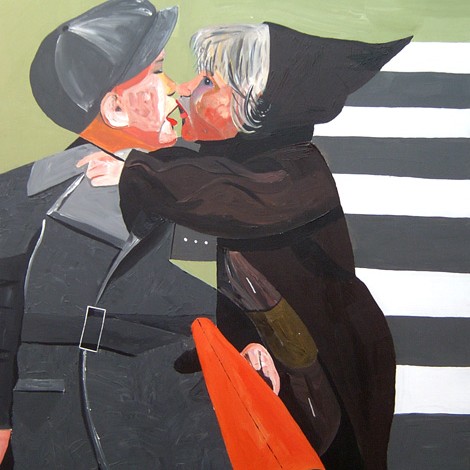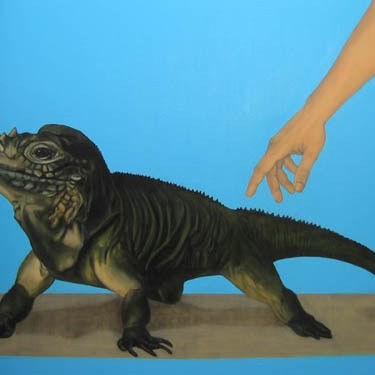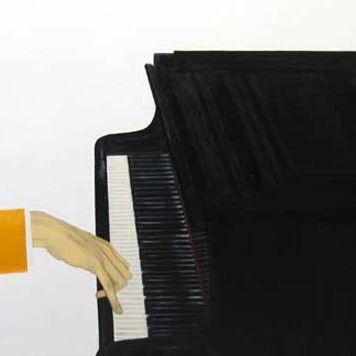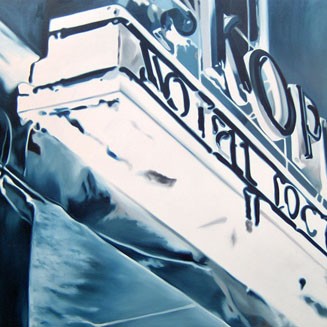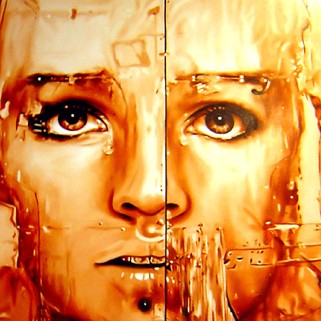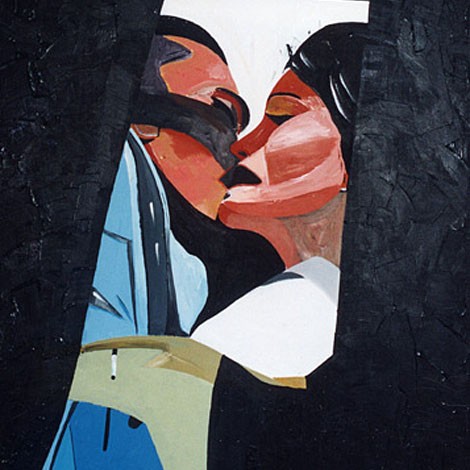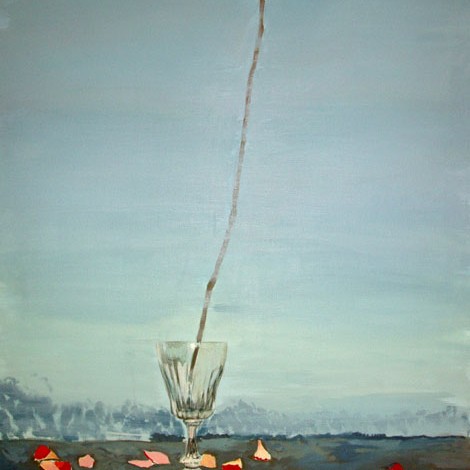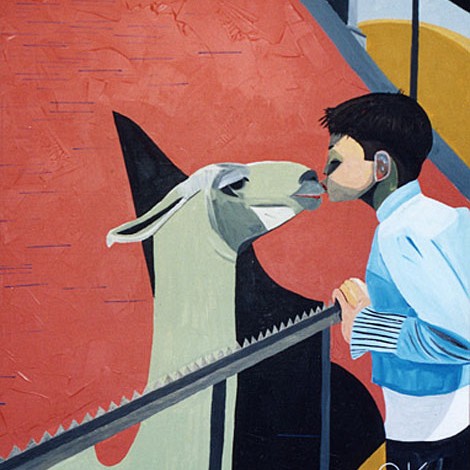Exhibition > Past > ArtDepoo
ArtDepoo 02.06.2005-04.07.2005
ZIELPUNKT: ARTDEPOO
The opening exhibition of ArtDepoo introduces to the viewers five artists, whose creative handwriting is of considerable difference. This way the gallery would like to signal to the public, how vast is the gallery’s intended grasp of modern art – and at the same time realizing that at the present exhibition has been exposed only a tiny bit of items belonging to the sphere of interest of the gallery.
The opening exhibition of ArtDepoo introduces to the viewers five artists, whose creative handwriting is of considerable difference. This way the gallery would like to signal to the public, how vast is the gallery’s intended grasp of modern art – and at the same time realizing that at the present exhibition has been exposed only a tiny bit of items belonging to the sphere of interest of the gallery.By today Laurentsius has been in the Estonian art for more than ten years. At the beginning of the 1990ies he together with different co-operation partners (Tommy, later A.D., but now someone & CO) emerged to the center of attention of the local art world. He is holding the position until the present moment, but because of different reasons. When Laurentsius arrived, his works were enormous in size and their surface was covered by all possible trash. People talked about trash-painting, but they were enchanted. “Nägu” (“Face”) by Laurentsius is an obvious embarrassment. Embarrassment, as on one hand Laurentsius is perfect at creating illusions, his brush can paint out even the smallest foreshortenings of the face. And Laurentsius has stressed this especially by exaggerating immensely the dimensions of the work. From another hand Laurentsius also understands perfectly well that a certain part of art has already long ago turned into camp, worn, repeated, poster-like. So he mixes debris and oil colour, metal and brush hairs, low and high. Doing nothing. Embarrassment.
Zielpunkt of Maarit Murka continues from where Laurentsius finished. Young author, artist, having freshly graduated from the Academy of Arts, has overcome embarrassment and confesses in public that original and brilliant artist’s handwriting can only form one part of the painting’s meaning. Yes, brushwork, colouring, light, shadow – everything is natural, even too natural, exact and precise. But Murka confesses openly that already for 150 years photography has achieved considerably better results at depicting of static single shots of the reality. A camera can do things, which a brush cannot. Still, Murka is painting like a photographer – and is saying by it that this is the new possibility of painting. To admit that catching of the truthful essence is handicraft, the role of art is the division of meanings, making of choices and making the possibilities to see the world more diverse.
When we can find several parallels of the modern art with the approach by Murka, we could most probably say the same of the considerably more poetic works by Mara Koppel. Also her handwriting is “cool” – large painted areas, the whole effect is achieved quickly and efficiently. But paintings by Koppel have been positioned in a series and inform by very clear and laconic means, who is this person behind the works – what does she consider in the world important, what is her vision of life and who could address her. Here we are not taught anything unexpectedly new, nobody is even trying to do so, but still our glance is being directed, focused on a certain fragment from everyday life and this is being transferred onto a large canvas. Maybe also here we can see the tendency of modern painting – onto the painting is being introduced enlarged everyday life, the authors express their skill to observe the world and seem to say in the manner of Rein Raud: details which have significance.
August Künnapu, the Wunderkind of the younger artist generation, is completely different from Koppel, but still similar to her. We may not be able to get far by such a tacky introduction, but let’s try. While talking of form, Künnapu is really different: contradictory to large areas his works have many small ones, instead of unoriginal brush work, his is even very highly creational, there has also developed August-Künnapu – style of figure handling. But on the level of meaningfulness, also Künnapu concentrates on choosing of everyday, even silly and slightly strange motifs. Künnapu moves on the same level as we do, he sees the same things, but just notices them differently.
Andrei Maksimjuk is maybe the best example of a very young author, who clearly accepts that he is not an island, but a peninsula – that his author’s position has inevitably been determined and each of his works are classified under “art history”. Maksimjuk openly admits that despite his youth, also he is already now a part of the art history – of that in the past and of that which only will be written down. He quotes or refers to classical motifs, which somehow have always been in the sphere of interest of painters and which have always been taken for granted: fruits, flowers, glass goblets, snowy mountain tops. But Maksimjuk has crushed the flowers, has pressed the mighty mountaintops to the background and has emptied the goblet. Furthermore: the only thing, which could finally fix the meaning of the paining –the rose stem –, exits the painting room before the solution arrives.
